Yazd Introduction & Context
Yazd is the 8th largest city of Iran and a UNESCO world heritage site. It is the second oldest city in the world, after Damascus. It is surrounded by deserts of Dasht-e Kavir and Dasht-e Lut on all sides, due to which the climatic conditions are extremely hot during the day and relatively cold during the night.
The city of Yazd has a great historic urban fabric. It is known for its energy-efficient and vernacular approach towards providing solutions for its extreme hot arid climate. The covered pathways with arches, Qanats (underground water channels) and Badgirha (wind catchers) are some of the typical features of the city.
RIch in culture and traditions, Yazd is a home to diverse religions and they cohesively exist there in harmony. Yazd has a very strong cultural background which affects the daily lives and the activities of the people. Privacy being a major part of their lifestyle, the traditional houses in Yazd have an inner courtyard. The streets are narrow and the fabric is dense to keep the open public and private spaces shaded during the long and hot summer days.
The Challenges:
In the last 4 decades, due to globalization, Yazd began transforming into an industrial city. It became a major industrial city in the center of Iran.Yazd experienced rapid growth of both population and built-up area. Urban sprawls started emerging in Yazd due to the increased population and a high demand of housing infrastructure. Increased density and population is leading to rampant new development. As a result, the Historic buildings and the old urban fabric are under immense strain and are being neglected. The harsh Climatic conditions also make it difficult to build environmentally suited dwelling for such a massive population.
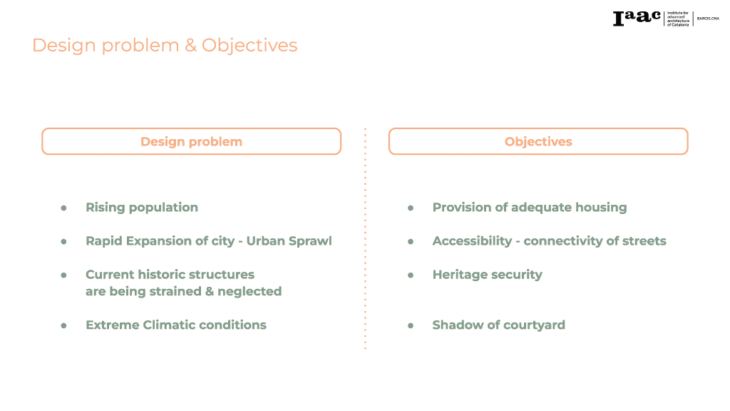
Morphological Characteristics:
The urban tissue of Yazd can be categorized into three typologies: Old City, Mixed & New developments
Old City: The urban tissue is dense with a lot of long and narrow alleys which prevents the desert heat from entering urban spaces and preserves humidity in Summers.
Mixed Development: A blend of the old and new network of streets, this typology has it’s own character. It is not completely well oriented but does maintain some of the attributes of the old city.
New Development: The city’s original network is completely transformed into systematic grids leading to the loss of its essence and also losing its climatic aspects.
Considering our objectives and the design challenges we identify Mixed Developed urban tissue as our area of study and interest.
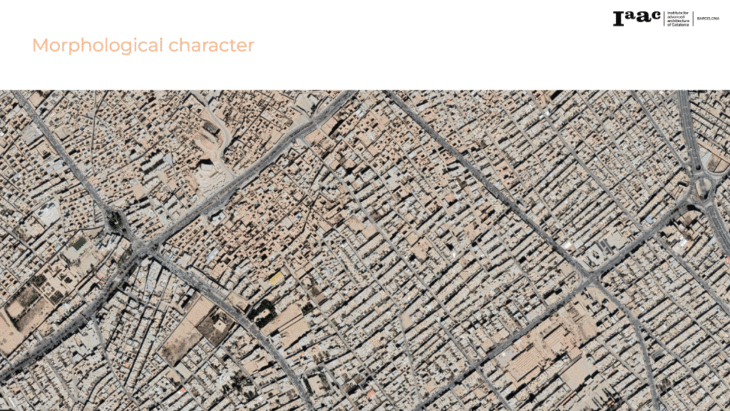
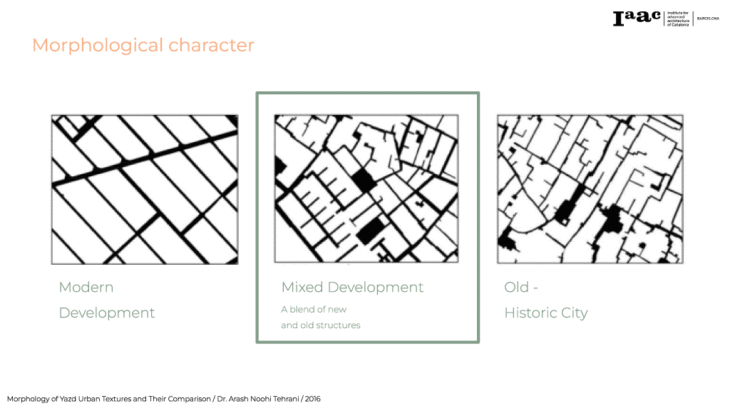
Methodology:
The whole project is divided into 2 main steps: Phenotype Stimulation, Building Stimulation
Step 1: Phenotype Simulation: We simplified the process of developing a phenotype of developing a street network by seting up certain criterias comprising – roads, nodes and Built up area.
Step 2: This step focuses majorly on improving the already obtained street and building networks by setting up criterias which would not only improve the quality of life in those buildings but also look into the historic and cultural aspects.
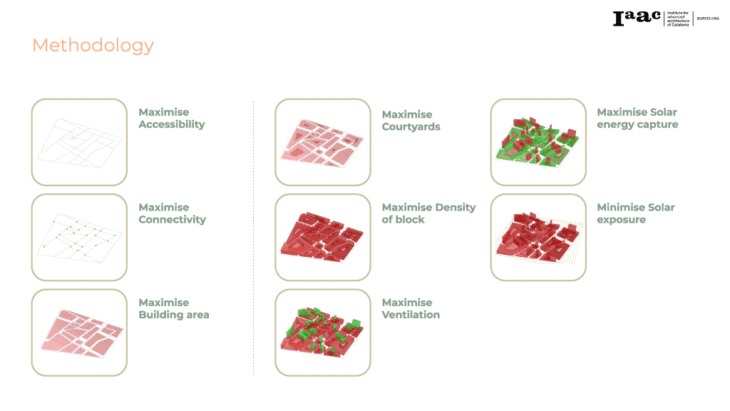
STEP 1:
Evolutionary Matrix:
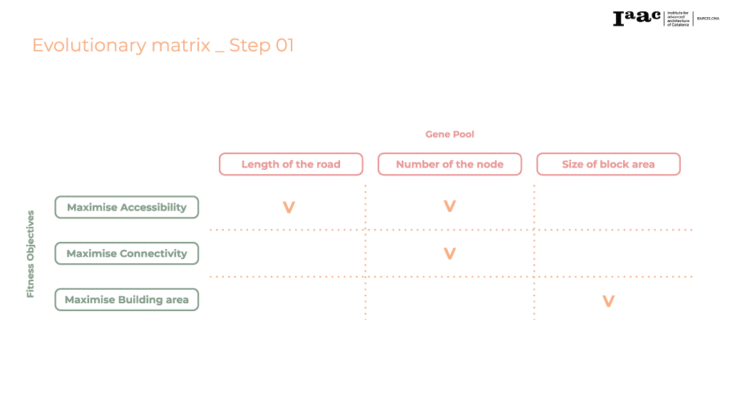
Simulation of the Phenotype:
Based on the criterias set in the gene pool, Wallecei gives us the most ideal phenotype which would work well in the context of Yadz.
Looking closely at the generations created by Wallacei and carefully analyzing with Wallacei tools, the selected options have the most optimal street and building networks.
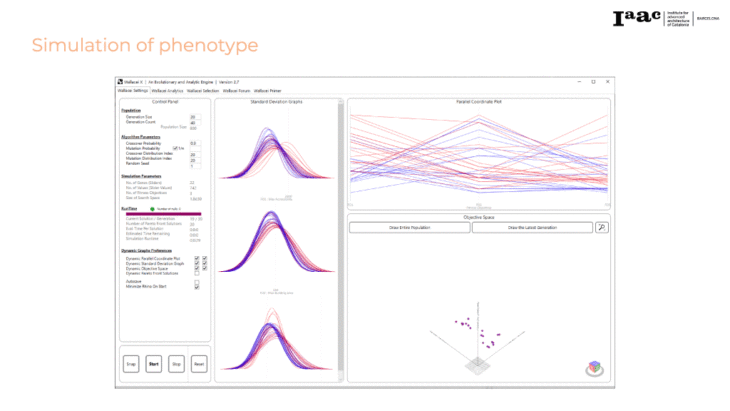
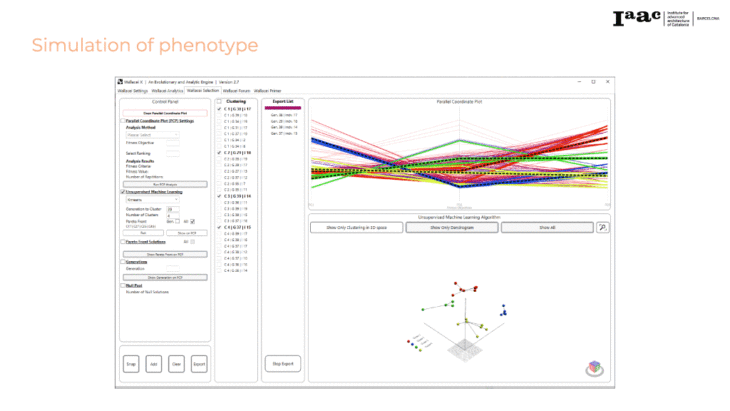
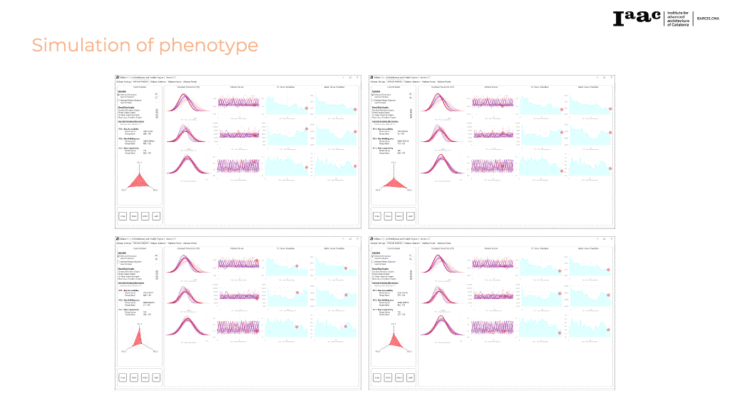
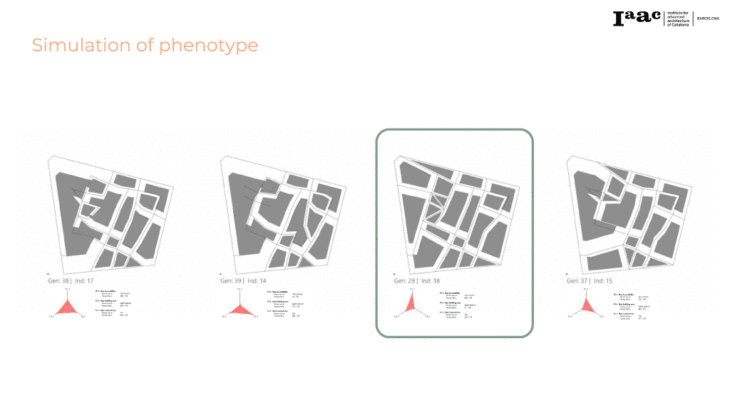
STEP 2:
Evolutionary Matrix:
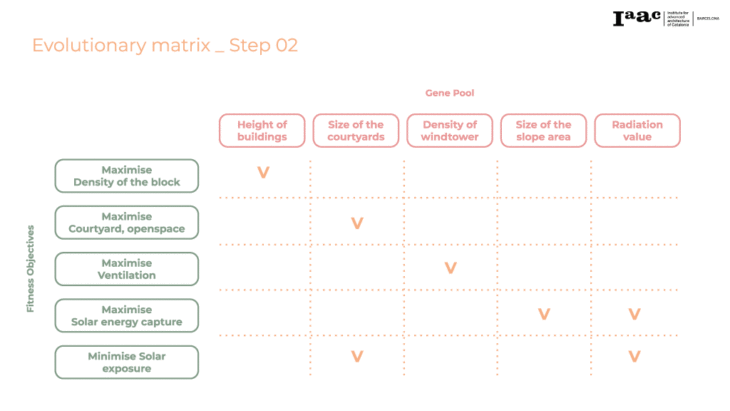
Optimization Stimulation:
The stimulation run has a gradual deviation and hence indicates that the simulation is progressing well. The simulation run consists of a generation size of 20 and a count of 40 individuals, which gives us 800 total simulations.
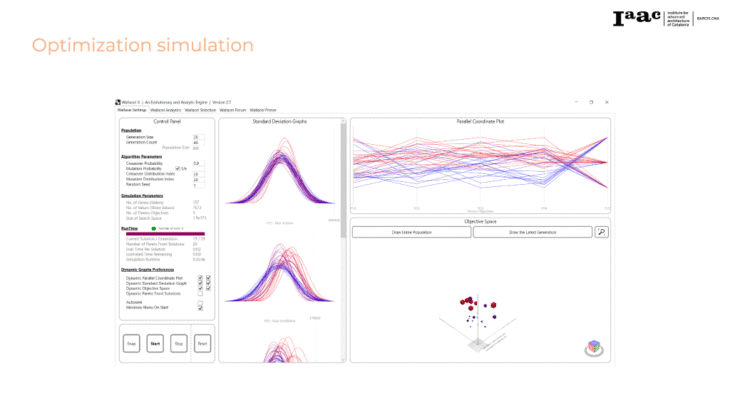
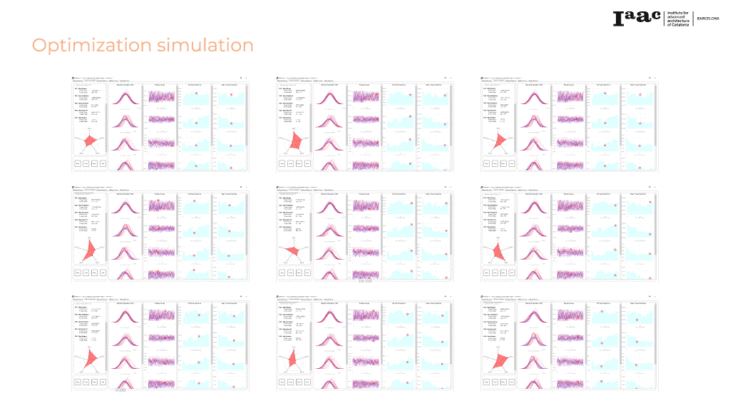
Pareto front solutions:
Considering the criterias and the objectives we fed in the gene pool, the pareto front tab gave us the most optimum solutions. The 5 objectives seem to be fulfilled completely in the following simulations hence they can be called as the most fit solutions to our design challenge.
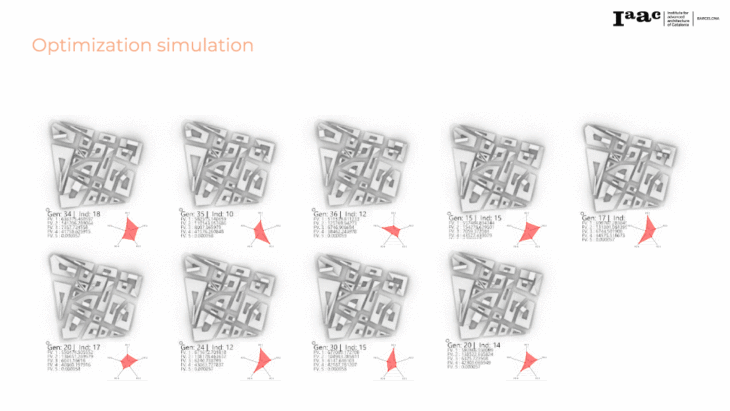
Genomic Sequencing:
Following are the sequencing of the genomes. As we observe at the end of the sequence the colours start to repeat more, indicating that Wallacei is forming and generating patterns. The patterns indicate that the algorithm is trying to achieve the optimal result according to our fitness criteria.
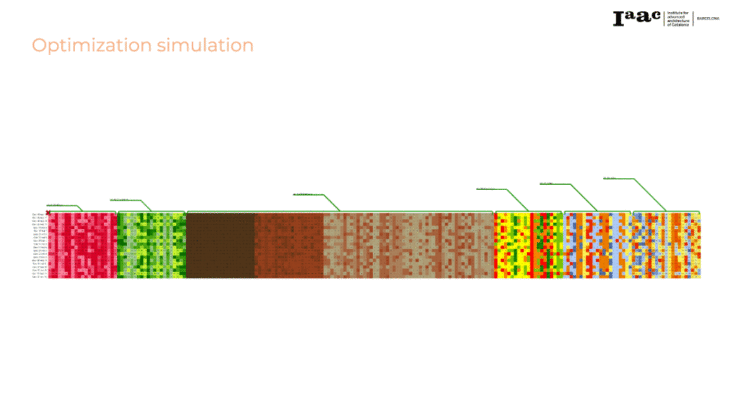
Conclusion:
In conclusion, the 5 objectives set did give us optimum results however, the phenotype simulation did give us an optimal solution but it could be explored further to avoid irregular geometries. Moreover, the project can be taken forward and be explored by generating more individuals with an improved phenotype.
‘Yazd – Reforming the Historic City’ is a project of IAAC institute for Advanced Architecture of Catalonia developed in the Master in City & Technology 2021/22 by Students: Jiyun Lee, Kriti Nirmal, Maria Magkavali and Faculty: Milad Showkatbakhsh.